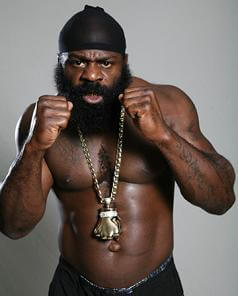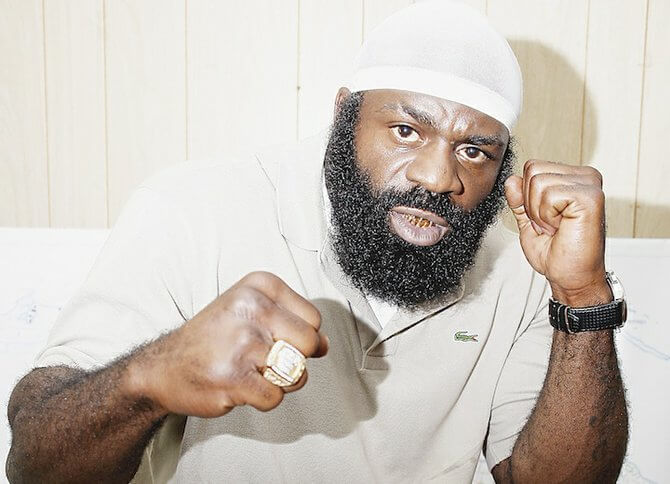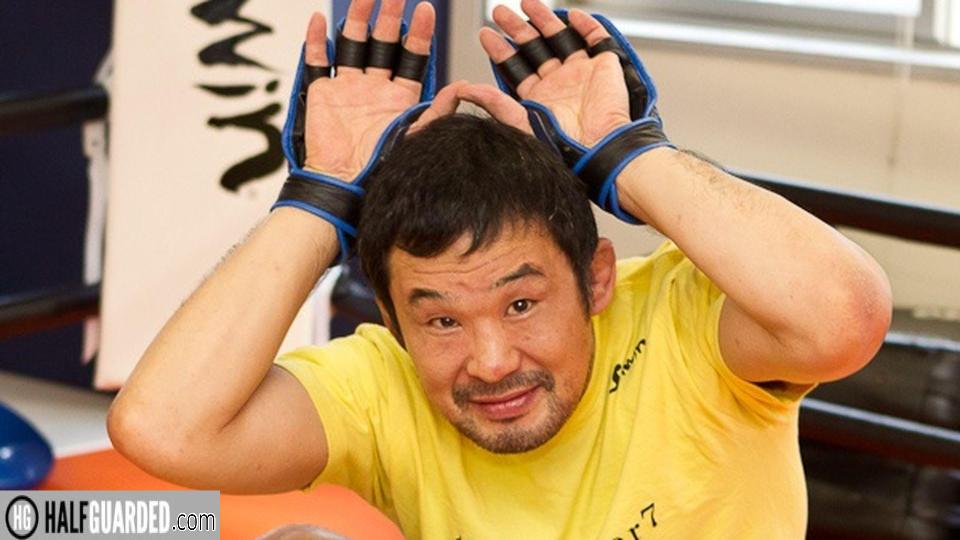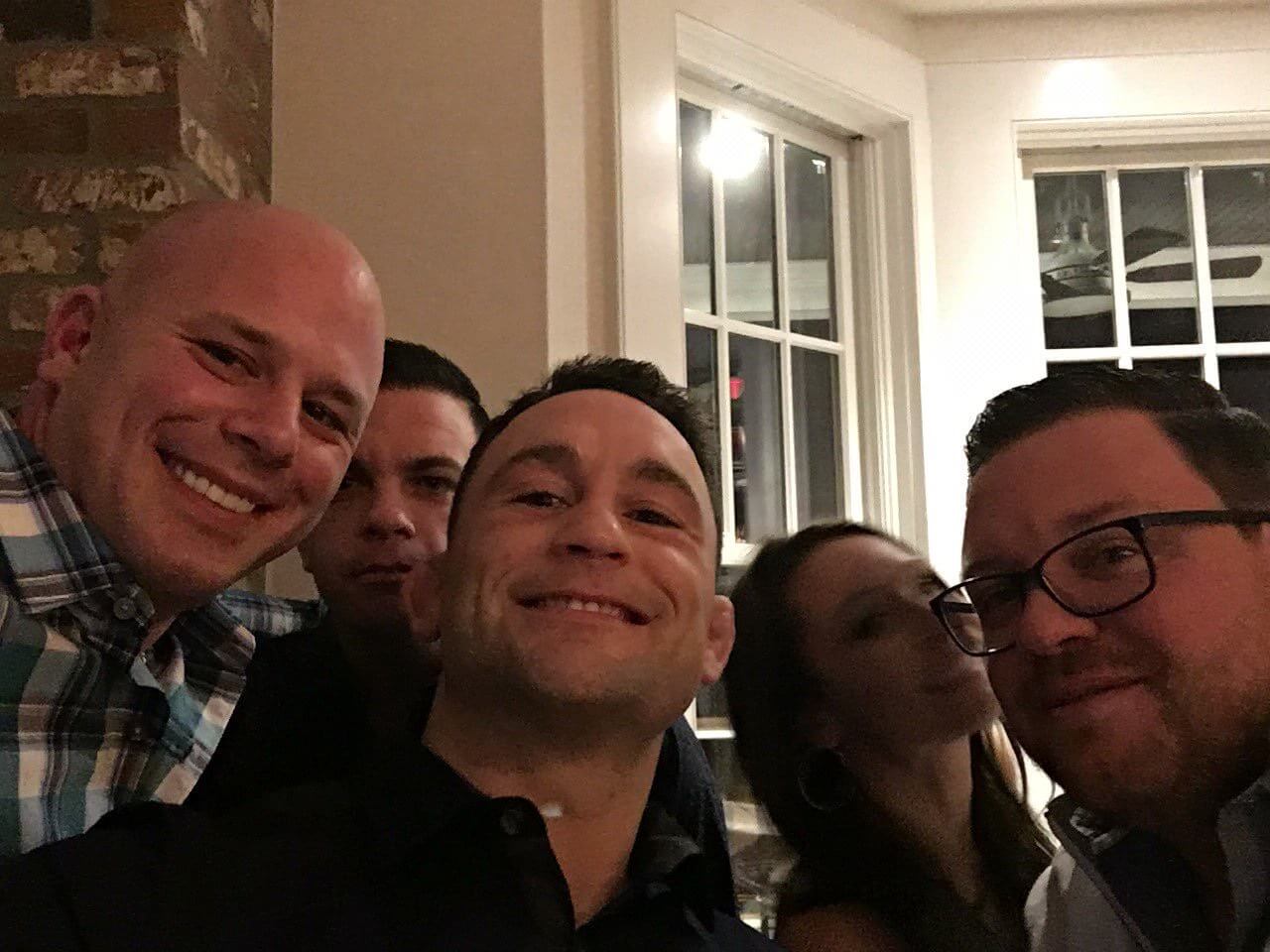@mattfgrady
Late last night news broke that Kevin Ferguson aka Kimbo Slice had passed away. Here is a brief recollection of his career. Condolences go out to his family and friends.
Kimbo Slice, (Kevin Ferguson) may have been the most unique individual in the history of mixed martial arts. He was one part family man and one part bareknuckle brawler. Back in 2003, he made his name in the fight game on an upstart, growing website called You Tube. His fights in the streets and backyards of Miami garnered millions of views at a time when You Tube was just getting started.
From there, he moved onto mixed martial arts. With his internet fame well-established, he immediately grabbed headlines online and in the MMA community. In 2007, in his first fight, he choked out former boxing champ Ray Mercer. From there, he picked up wins against the unheralded Bo Cantrell and a well-past-his-prime Tank Abbott. Considering the level of competition, these wins were not real impressive. To the general public, though, they were exciting fights won by a scary, badass street fighter. With each passing victory Slice’s popularity, visibility, and legend grew. People were drawn to him and wanted to watch him throw fists. For Slice, it paid the bills and helped to feed his family.
Slice was quickly gaining so much notoriety, that the fledgling MMA promotion Elite XC invested in him heavily. They promoted him as their biggest star headed into their debut on CBS in May of 2008. In the main event Elite XC: Primetime, Slice knocked out journeyman James Thompson in a wild brawl. The fight was a spectacle, where some of Slice’s fighting weaknesses were exposed. Slice took a lot of shots, gassed, and looked beatable. The show, however, was a ratings bonanza. Over 6.5 million people watched Slice and Thompson knock each other around the cage. This was a MMA ratings record that lasted for years. After only four MMA bouts, Slice was the biggest television star in MMA history and on his way to becoming a millionaire.

Next, Slice was scheduled to fight Ken Shamrock in October of 2008. This fight would have easily smashed Slice’s previous ratings records and led to even greater stardom and success. Unfortunately, the fight did not happen that night. Shamrock, inexplicably, got a nasty cut above his eye during warm-ups. On a couple hours notice, Elite XC had to scramble to find a replacement to save the show. They ended up choosing Seth Petruzelli, an unknown light heavyweight fighter. In the short notice fight, Petruzelli knocked Slice out in 14 seconds. It was over quickly and soundly. Slice lost and lost badly.
After the fight, Petruzelli claimed he was paid extra by Elite XC management not to grapple with Slice. It turns out athletic commissions tend to frown upon that sort of thing. With Petruzelli’s claims of the promotion rigging fights, the turmoil of Shamrock pulling out, and Slice losing so emphatically, Elite XC was forced to close its doors.

Despite the company going under, Slice’s disclosed pay for the Petruzelli fight was still $500,000. Many have speculated it was even more, since he took the fight on such short notice and bailed the company out of a tough predicament. In only five fights, Slice had gone from fighting for free in backyards to getting paid over half a million dollars per fight on network television.
At this point, Slice could have walked off into the sunset. He had been paid well by Elite XC and likely made more money than he had ever imagined. Instead, he chose a riskier path. He signed with the UFC and joined The Ultimate Fighter reality series. On the show, Slice lost in the preliminary round to Roy Nelson. Slice did not look good in the fight, was taken down easily, and lost via decisive ground and pound. It was not the showing he wanted, but the fight still did enormous ratings, with 5.3 million viewers on Spike.
Despite the quick knockout loss to Petruzelli and the poor showing against Nelson, Slice was still an attraction fans wanted to see. In December 2009, the UFC gave him another shot; this time against Houston Alexander. Based on their fighting styles, this should have been an exciting matchup. But it ended up being a dull fight, where Alexander avoided Slice for much of the fight. In the end, Slice won via a very unimpressive decision.
Next, Slice fought Matt Mitrione in May of 2010. Mitrione won the fight handily after some sloppy ground and pound. Again, Slice looked bad and out of his league. After the loss, Slice was cut from the UFC.

By this point, it was very clear that Slice was not a legitimate MMA heavyweight prospect or future title contender. His aura and star power, however, were still present. It made sense that boxing would be his next move. Without kicking and grappling Slice could feel more at home. He could also handpick his opposition. He went 7-0 in pro boxing, but never gained the attention that he did in MMA. His boxing run ended with little fanfare in 2013.
In June of 2015, Slice surprisingly returned to the MMA scene with Scott Coker’s version of Bellator. At the age of 41, after a five year sabbatical from MMA, Slice had managed to get another big fight and pay day. He was finally going to step into the cage with Ken Shamrock. This was the fight that was originally supposed to happen in Elite XC back in 2008. Now, Shamrock was in his fifties and Slice hadn’t won a MMA fight since 2009. The fight was another Slice spectacle. He was taken down easily, but managed to escape a rear naked choke and knock out Shamrock in the first round. It was a sloppy, train wreck of a match. Not surprisingly, the fight set viewership records for Bellator. After a decade in the spotlight, Slice was still a star.
Following his win over Shamrock, Bellator announced that Slice would take on Dhafir “Dada 5000” Harris next. This fight was disturbing on a number of levels. Neither fighter looked good. In fact, both fighters gassed early, showed virtually no technique, and were lambasted by fans and media alike. In the end, Slice won by TKO, but the bigger stories came out after the fight. Harris, who never should have been sanctioned to fight, was stretchered out of the building, had two heart failures, and was in the hospital for weeks. Then, Slice was popped for using performance enhancing drugs and the fight ended up being ruled a no contest. On paper, and in the cage, the fight was a disaster. On television, it set another viewership record for Bellator, with 2.5 million viewers.

Clearly, there was something special about Slice. He managed to become a star in MMA only because people wanted to see him fight. He was never a great mixed martial artist. No one would argue otherwise. Yet, he made it work. He literally went from fighting dudes at barbecues to being one of the biggest stars in combat sports. Along the way, he earned millions, provided for his family, and raised his kids. In the end, Slice’s MMA career will always be remembered. Not so much for his athletic achievements, but for his ability to connect with audiences. As the sport changes over time, it’s likely there will never be another fighter like him.




